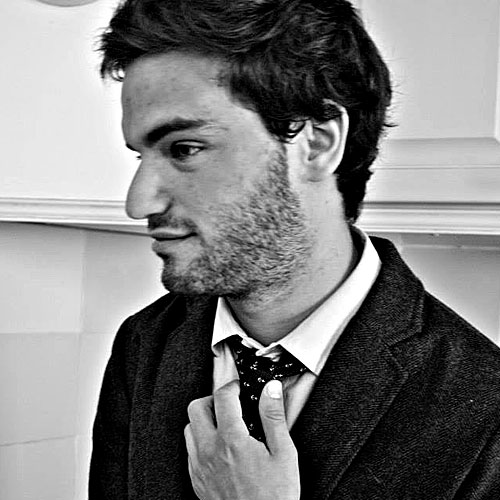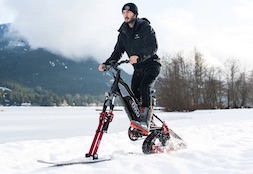Since bursting onto the scene at Cannes with 1989’s defiantly lower-cased indie, sex, lies, and videotape, director Steven Soderbergh has more or less had his way with Hollywood, making everything from Academy Award-winning films (like Erin Brokovich and Traffic), to nonlinear comedies (Schizopolis), to movies with porn stars (The Girlfriend Experience), to an experimental thriller with no script at all, like 2005’s Bubble—which was aptly billed as “Another Steven Soderbergh Experience.”
From roughly 2013 to 2015, he directed, photographed and edited every episode of the two seasons of The Knick, an early 1900s medical drama starring Clive Owen. Last year, he released Mosaic, a choose-your-own-adventure TV show on a smartphone app of the same name (which later aired, in linear order, on HBO). And this Friday is the premiere of Unsane, his psychological horror movie—which he filmed entirely on an iPhone (although, as one might expect, it does not look at all like anything you’ve filmed on an iPhone).
In honor of yet another act of directorial bravado, we’re taking a look back at the most gives-zero-fucks moments from the filmmaker’s illustrious career. Herewith, a brief history of Steven Soderbergh doing whatever the hell he wants.
1989: Soderbergh makes sex, lies, and videotapes
Let’s go back to where it all began: the little $1.2 million indie, starring James Spader and Andie MacDowell, practically set the precedent for the wave of independent cinema in the decade to come, and made Soderbergh the youngest winner of the sought-after Palmes d’Or in the history of the Cannes Film Festival. As lore goes, he wrote the script on a legal pad over an eight-day drive to Hollywood, then convinced actors to work on spec. He also insisted on using lower-case letters in the title of his film. Says Soderbergh: “It just looked better. I looked at it in capital letters and it looked wrong.”
At the time, it was a miracle that he a) got this made for practically nothing; and b) found himself in the main competition at Cannes, where he was never expected to be, much less win.
1993: Soderbergh makes an abstruse Kafka biopic, called Kafka.
Only Soderbergh would follow up a critical success like sex, lies, and videotape, by potentially squandering his goodwill in an effort to make this passion project: a mostly black-and-white, $11 million biopic of Franz Kafa, which blended fact and fiction with surrealist flourishes from the famous Czech author’s life.
20 years later, in 2013, Soderbergh announced that he would be re-cutting the movie. “I’d like to make it more of I’d like to make it a little more abstract and more of a hardcore art movie. It’s not a tweak: it’s triage.” As of last July, he was still working on it.
1996: Soderbergh makes the intentionally difficult nonlinear comedy, Schizopolis.
Undeterred by the generally poor reception of a few audacious films post-sex, lies, and videotape, Soderbergh made (and starred in) an outrageously daring comedy with only the semblance of a plot, told from three different points of view. “In the event that you find certain sequences or ideas confusing, please bear in mind that this is your fault, not ours,” Soderbergh tells the viewer in the introduction to the film. “You will need to see the picture again and again until you understand everything."
There are no real opening or end credits; nor was there a script prior to filming. A “secret screening" took place at Cannes, which sounds like either the coolest or most insufferable thing ever. Schizopolis is now a part of the Criterion Collection.
2002: Soderbergh makes Full Frontal on a digital camera.
After being nominated for Best Director twice in one year (2001), for Erin Brokovitch and Traffic, and winning for Traffic—and after directing the box-office smash remake of Ocean’s 11—Soderbergh decided to make Full Frontal. The plot, as Roger Ebert notes in his milquetoast review, “involves a film within a film, on top of a documentary... It's the kind of film where you need the director telling you what he meant to do and what went wrong and how the actors screwed up and how there was no money for retakes, etc.”
The film was also notable because Soderbergh, ever the early adopter and proselytizer for new tech, filmed it himself on a digital camera—which, at that point, was still well outside the norm for Hollywood filmmakers.
2005: Soderbergh’s makes Bubble with nonprofessional actors, and deploys a prescient release strategy.
Following the success of Ocean’s Twelve in 2004, Soderbergh released Bubble—a thriller he made for just over a million dollars on an HD digital camera with nonprofessional actors. But how he released the movie made headlines. Rather than give it a normal theatrical run, he made it available on the cable channel HDNet the same day he premiered it at movie theaters, and released it on DVD a few days later. Now, this “day and date” strategy is becoming increasingly the norm—particularly for lower-budget films that will primarily be seen on Netflix or Amazon, but still want to be eligible for the award circuit.
2008: Soderbergh shoots The Girlfriend Experience starring then-active porn star Sasha Grey.
He also made the film available on Amazon and on-demand prior to its theatrical release—again, going against the grain of what mainstream filmmakers were doing at the time.
2017: The Grand Distribution Experiment of Logan Lucky
Following a hiatus from directing—wherein he still managed to direct, photograph and edit every episode of two seasons of The Knick—Soderbergh returned in 2017 with the rollicking West Virginian heist film, Logan Lucky (it was one of my personal favorites from last year). But rather than subject himself and his film to the whims of studio execs, he released it under his own production banner, Fingerprint Releasing—which he eventually hopes to use to help other independent-minded filmmakers skirt the system as well. According to IndieWire, he was essentially able to drum up a mid-level budget by selling off foreign distribution rights and post-theatrical rights (to the likes of Netflix, HBO, etc), then have complete creative control over how he wanted to direct, advertise and market the film, going so far as to design the look of the posters and trailers himself.
Late 2017-2018: Soderbergh creates the interactive, choose-your-own-adventure TV show and app, Mosaic.
You can read more about this here.
This Friday: The Limited Theatrical Release of Unsane, which he shot entirely on an iPhone.
Soderbergh has long proselytized for digital cinematography, and admits that the iPhone, with its 4k capture capabilities, was a game-changer. Check out the trailer for the psychological thriller, starring Claire Foy, and tell me this looks like something shot on a frickin’ iPhone.






